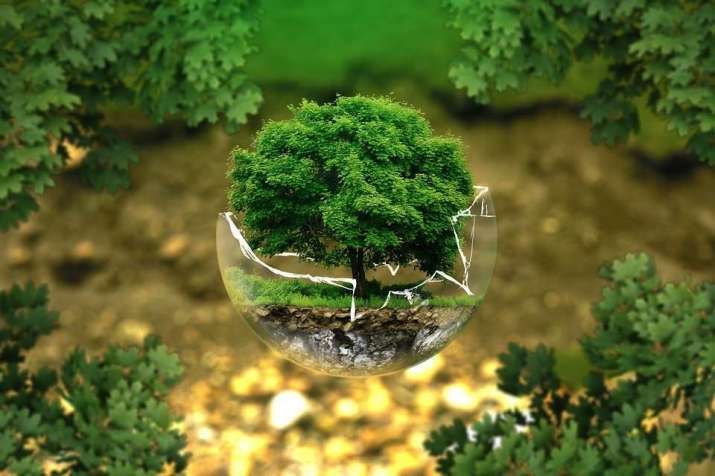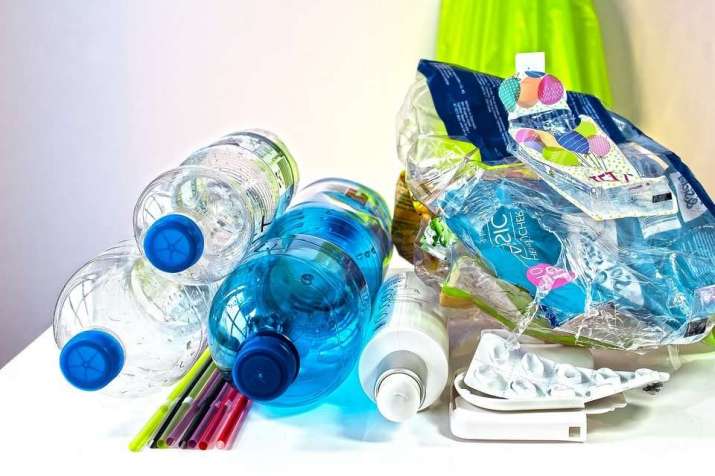FEATURES|COLUMNS|Bringing Mindfulness to Life
The Problem of Plastic and Being Complicit

The door to the mind should only open from the heart. — Joy Harjo
Invisible to the naked eye, my fingertips are covered in hundreds of tiny circular scars. A magnifying glass reveals these little moon craters; you probably have some too, the result of accidental pricks from a rose or bramble-picking. In my case, they come from the impact of a tiny needle, shot out of a pen-size handheld device. I drew back the spring and pressed the button with the intention of drawing blood. The red drop is absorbed by a test strip inserted into a device that measures the sweetness of my blood. If it is too sweet, I need to give myself some insulin; if not sweet enough, I need to ingest some carbohydrates. This has been happening 6–8 times a day for the last 17 years, and it is about to change. I have now received a device that measures blood glucose levels ongoingly, without the need for finger pricking. It means much better control of my condition and enhanced life expectancy. I will spare you the details of how it works, the point I want to make is about a more general concern than type 1 diabetes management: it is about plastics and the state of our environment.
All of the mentioned devices are made from hard plastics that, unlike organic substances, don’t biodegrade. My new bits of equipment involve even more robust, seemingly indestructible types of plastic. Every two weeks I unleash a bagful of beautifully designed, sophisticated medical gear, complete with tiny batteries, into the environment. I struggle with that; knowing that what keeps me alive poisons the environment. The instruction manual says, in tiny print, that the “product should not be disposed of via municipal waste collection” and encourages me to seek advice from the manufacturers, clearly passing the buck. Basically, there is no “away” into which these kinds of plastics can be thrown. They aren’t eaten by microbes and re-integrated into the cycles of life. They are broken down into smaller pieces, a process that can take thousands of years in anaerobic conditions like a landfill, and much faster in the ocean under the influence of sunlight. A plastic bag can degrade over the course of a year, but into what? Into tiny, toxic microplastics, chemicals such as bisphenol and PS oligomer, which are taken up into the food chain and make whales infertile. If they do have calves, they can die from poisoned breast milk. Furthermore, a clear link has been shown between autoimmune diseases (type 1 diabetes belongs to this class of illness) and plastics.*
The health of our beautiful planet and that of all our bodies and our souls are one. Every action matters. Where do we put all our single (and repeat use) plastics? And how do we dispose of our uneasy feelings? There is no “ away” for them either. They litter our inner landscape and block the natural flow of well-being. Human culture seems to be inherently flawed. How can it be that something as practical as a rubber boot, as astonishing as a parachute, as handy as a water bottle, as glamourous as a tube of lipstick, as connecting as a mobile phone, turn out to destroy the basis of life on Earth? We can’t go back to making things out of wood and animal skin, or can we? Would we not do the same thing all over again: rejoice in the invention of a metal saw, praise the enduring heat of a piece of coal, revel in the lightness of a waterproof jacket, sigh in relief at the arrival of an insulin pump?

Of course, there are signs of improved, less damaging technologies: compostable plastic bags, biodegradable diapers, and plant-based water bottles. We hear of certain bacteria that feed on certain plastics. Laws are being passed banning single-use plastic bags in supermarkets. I try to let these items of positive news in to redress the internal balance, but the uneasy feelings remain, and not only with regard to plastics. The effects of our reckless overuse of the Earth’s resources stare us in the face: the daunting bubbles of methane rising from warming oceans; increased extreme weather events that are destroying lives and homes. The novelist Annie Proulx expresses the zeitgeist well:
I believed the rumbling climate shift caused an invisible, unspoken malaise in people the world over. Something was wrong and they felt it in their bones, even those remote in the ice, among the lianas, in thin high air, even in denying cities. Climate crisis exposed the bad wiring in the human brain. . . . People may have sensed that their god-given right to wrest a share of wealth from the natural world (the source of every fortune) was passing from “unlikely” to “sorry, it’s over”. . . . I was afraid then and I am afraid now.**
So how do we live with our fear amid climate change, pollution, and unsustainable consumption? Amid the tumult of the US presidential election and rampaging waves of COVID-19? For some, being on some kind of spiritual path can give the sense that, despite everything, we are moving toward the light; we are blessed with occasional glimpses of, and the potential for glorious Awakening. More than ever, this path must include the compassionate heart as its governing principle. US Poet Laureate Joy Harjo puts it like this:
The heart is the smaller cousin of the sun.
It sees and knows everything.
It hears the gnashing even as it hears the blessing.
The door to the mind should only open from the heart.
An enemy who gets in, risks the danger of becoming a friend.***
* Bisphenol A: A notorious player in the mosaic of autoimmunity (PubMed)
** 'How do we become a serious people again?' Dave Eggers, Annie Proulx and more on the 2020 election (The Guardian)
*** Excerpt from “This Morning I Pray for my Enemies,” by Joy Harjo
See more
Living Mindfulness
Holy Isle Centre For World Peace And Health
Related features from Buddhistdoor Global
Bodhisattva Work: Bringing One’s Heart to Financial and Life Planning
Dwelling in the Heart of Reality: An Interview with B. Alan Wallace
Andrea Miller’s Awakening My Heart: A Seeker’s Journey Brought to Life














